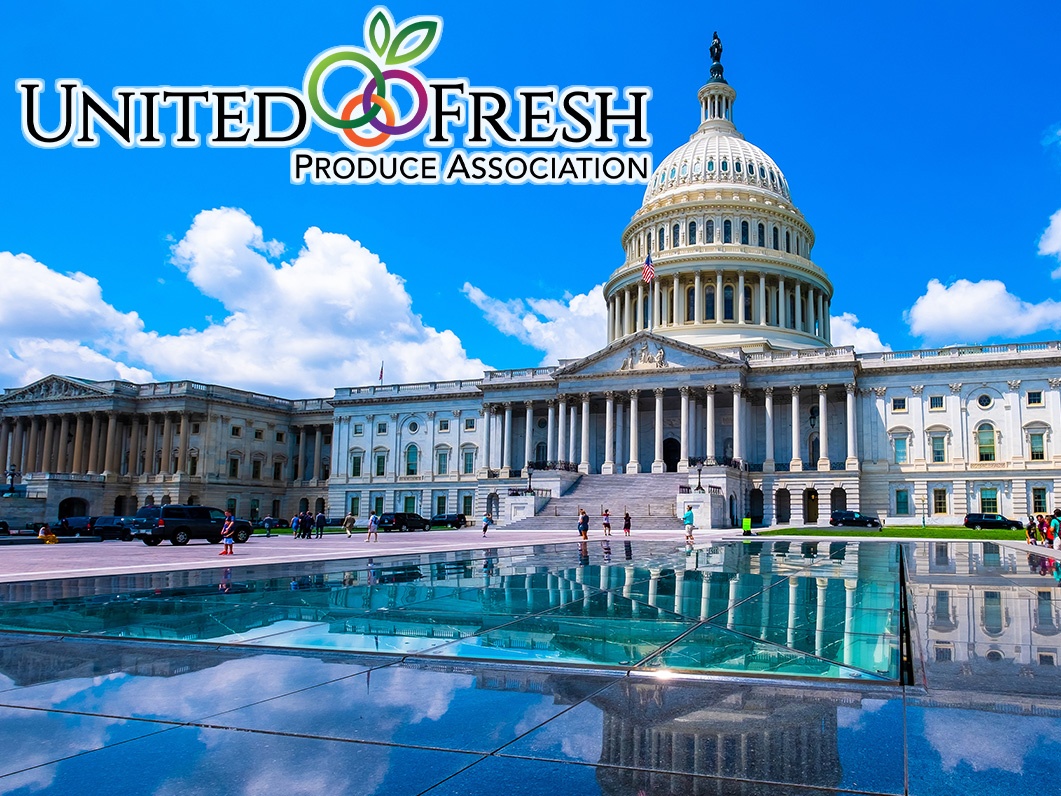The United Fresh Washington Conference set for Sept. 20-22 in Washington, D.C., brings with it what the organization calls “a unique opportunity for the fresh produce industry to share with Members of Congress and the Administration the important issues that impact our industry during Congressional Connections meetings.”
Among the issues to be discussed is the Infrastructure Investment and Jobs Act of 2021 passed the Senate and is now H.R.3684, which is slated for a vote in the House on Sept. 27. “The bill provides increased investments in roads, bridges, ports and other critical modes of transportation that enable us to deliver perishable goods across the country and around the world. Also, significantly invests in much-needed infrastructure investment and refurbishments for western states to address the crippling drought conditions that have impacted the fresh produce industry,” a United release noted. “The bill does not include the Flexible Hours of Service rules that maintain the safety of drivers and others on the road, while ensuring that ALL agricultural products, including perishable, fresh produce, can be delivered from location to location in a timely manner preventing loss.”
On the matter, “United Fresh also supports federal efforts through this legislation that will aid in recruiting new drivers to address the labor challenges that are impacting the delivery of fresh produce.”
By the numbers, the Infrastructure Investment and Jobs Act of 2021 includes $110 billion for roads, bridges and major projects; $65 billion for broadband; $17 billion for ports and waterways; $46 billion to help states and cities prepare for droughts, wildfires, flooding and other consequences of climate change; $8 billion for infrastructure refurbishments and new water projects in the west.
The trip will also serve as an opportunity to look at the industry’s efforts to “implement sound, science-based food safety policies.” The release said that in that quest, “The fresh produce industry works tirelessly to provide the safest possible fresh fruits and vegetables.” It added, “Although it’s been 10 years since the passage of the Food Safety Modernization Act, FDA has yet to establish a functional farm definition and hasn’t settled on requirements for agricultural water.” And, it said, “Resources should be allocated toward effective prevention and investigative efforts, not reactive feel-good measures that lack the scientific backing to improve food safety and serve as non-tariff trade barriers.” The release also said that the “CDC reports between 30-60 produce-related outbreaks per year, affecting between 900-3,000 Americans; Cyclospora sickens an estimated 150,000 Americans per year, but federal research funding largely ignores this pathogen; and only 20 percent of the research proposed to the USDA Specialty Crop Research Initiative is awarded.”
Additionally, the trip is meant to impress congressional members of the ongoing necessity to “ensure our industry has the workers they need.”
It said, “The bipartisan Farm Workforce Modernization Act HR 1603 passed the House earlier this year, is the best mechanism to achieve reforms. The Senate now must take action!”
Topics on the table include reformation of the guest workers programs and provisions to regulate wages “to provide cost predictability to businesses, provides legal status to employees in good standing and reforms the H-2A and H-2B programs to make them more manageable for employers.” It said that the ag industry “employed just under 2.7 million people in 2019 with an additional 20+ million being employed in agriculture-related jobs through the supply chain… and the Department of Labor states that upwards of 50 percent of those workers were undocumented.”
And United Fresh seeks to “address nutrition insecurity in America,” noting, “To combat nutrition insecurity, United Fresh supports Secretary Vilsack’s vision of incorporating more fresh fruits and vegetables into federal nutrition programs. This includes the National School Breakfast and Lunch Program, Fresh Fruit and Vegetable Program (FFVP), Women, Infants, and Children Program (WIC), Out of School EBT for kids, the Supplemental Nutrition Assistance Program (SNAP), and USDA Purchasing Programs including TEFAP, Section 32, Food Distribution for Indian Reservations (FDPIR), and the Commodity Supplemental Foods Program (CSFP).”
It is estimated that “only 10 percent of Americans meet the DGA recommendations for fruit and vegetable consumption,” the release said. “Individuals with diet-related chronic diseases that contract COVID are twice as likely to be hospitalized and have a 50 percent higher chance of death. DOD Fresh and the Fresh Fruit and Vegetable Program are the only dedicated federal support of fresh produce for schools and on Indian reservations. Out of approximately 21 million low-income elementary students, 4 million children receive a fresh fruit and vegetable snack through the FFVP program.”
It continued, “Currently, CSFP and FDPIR include no fresh fruits or vegetables for participants. TEFAP purchases have historically been limited to around five commodities and the new TEFAP boxes remain limited in variety and are not available in all states. More than 100 different varieties of fresh fruits and vegetables were included in USDA’s food box program in 2020-2021.”
For questions on the Washington Conference, contact Angela Tiwari, United Fresh Director, Grassroots & Political Action, at 202-303-3416.


